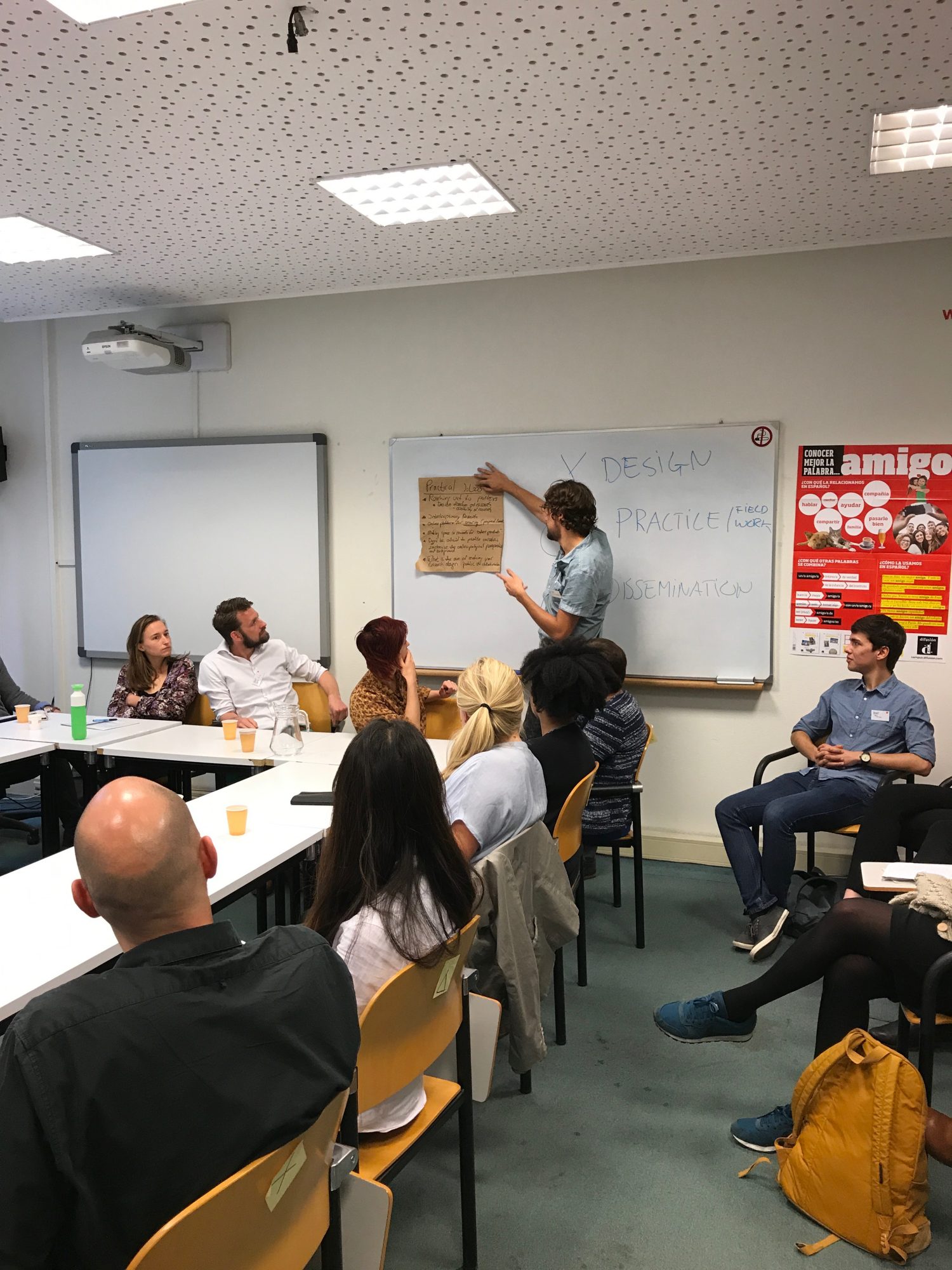During the Day of Anthropology 2017 the working-group Public Anthropology organised a workshop on “Making anthropology public”. Some of the issues discussed were power relations inherent to research, when and how to involve research participants and different ways of sharing results. The conclusions of the workshop are presented on Antropologen.nl in various articles, starting with this Blog.
The room was packed for our ethnographic experiment. What we wanted to do? A very small teeny tiny research about public anthropology in collaboration by actually doing it. How we would do it? Well, in a collaborative way, of course! How to make it public? We didn’t know – write something, film everything, take pictures, keep the ‘raw materials’ that the workshop would produce safe and make it available in a ‘public way’. This is our attempt to do so. Without being really sure how things would turn out we asked every person present to give his/her informed consent by not leaving the room. Everyone stayed, and only one objected to being filmed.
What preceded: after having discussed ideas about making space for ‘doing public anthropology in collaboration’ for quite a while and having organized several activities accordingly (together, as well as independently from each other), we came up with the idea of organizing this workshop that should have concrete follow-ups in terms of dissemination (… public) and concrete activities (… in collaboration). The organization of it was done over several bottles of wine spread out over two evenings in Utrecht. We decided on what we considered a fun, collaborative, interactive format, invited four cool scholars to say something about the topic, wrote the text for the program and wondered about the impact it could have.

Back to the packed room. Michiel, Yvon, Nick and Guiselle each gave a pitch of more or less two minutes in which they shared their experiences of making anthropology public in collaboration, and this was just, wow, we (I mean, we, anthropologists) can and do a lot to make our research public: record podcasts, make documentaries, transmit radio programs, write opinion pieces, organize photo exhibitions, engage in all kind of experimental text presentations. There are as many ways to do it in collaborative ways: co-author with research participants, involve research participants in research designs, discuss research progress with relevant people in the field, and, and… This list is not exhaustive at all and putting it into practice will confront us with many ethical issues, but I think we all got pretty excited about it.

We can make the research collaborative, but we can also become part of the social change that our research is about by advising on activist strategies, help out on activist meetings, or teach within and with organizations and corporations on issues such as diversity and cultural sensitivity. How to do this, whilst securing the safety and anonymity of the research participants, dealing with representational issues, keeping the doors open to other stakeholders in your research setting, meeting up to the criteria of your tenure track, doing acquisition in the contemporary funding landscape, safeguarding the quality of research findings? And: how does ‘we the anthropologists’ designing and deciding on a collaborative research design NOT reproduce traditional power relations between the researcher and the research?
These and many more questions were discussed in the ‘break out groups’ – organized into ‘research design’, ‘fieldwork’ and ‘dissemination’. The fascinating thing was that we actually concluded, that when we do public anthropology in collaboration, it is not possible to hold on to these fixed stages of research. Designing research becomes part of doing fieldwork, doing fieldwork becomes part of dissemination and everything betwixt and between.
Hence: to be continued.
PS1. A small methodological reflection: our fun exercise to divide the group into break-out groups did not work (FAIL), we had too little time, and the rest was just great – in collaboration.
PS2. Note that even in this short blog a lot of time (and text) is spent on explaining what we did and how we did it, leaving very little room for presenting ethnographic material in the text itself, so please click along, but also consider this piece of text as a kind of ethnographic finding in itself!
PS3. Also check:
